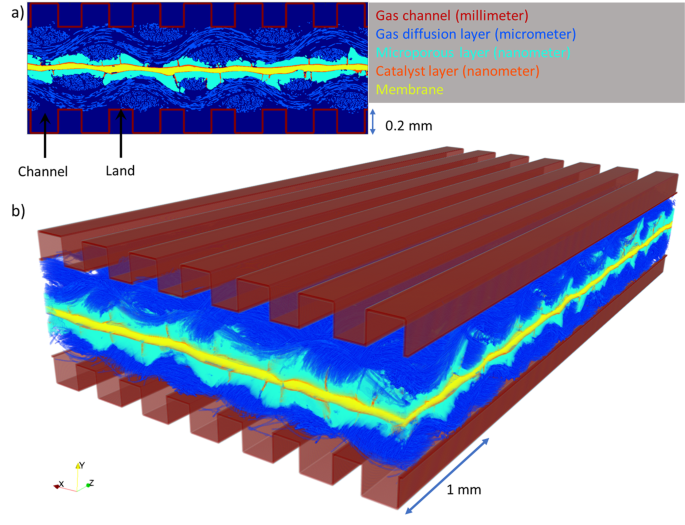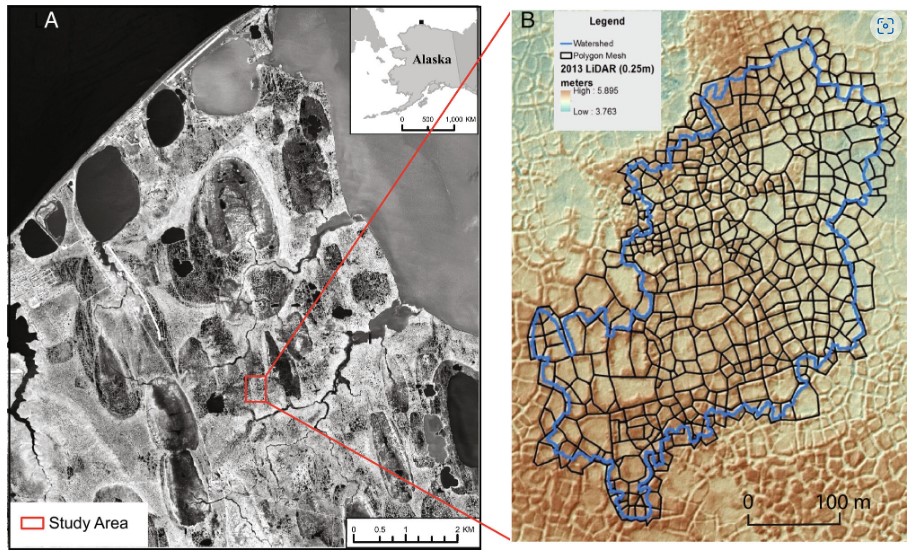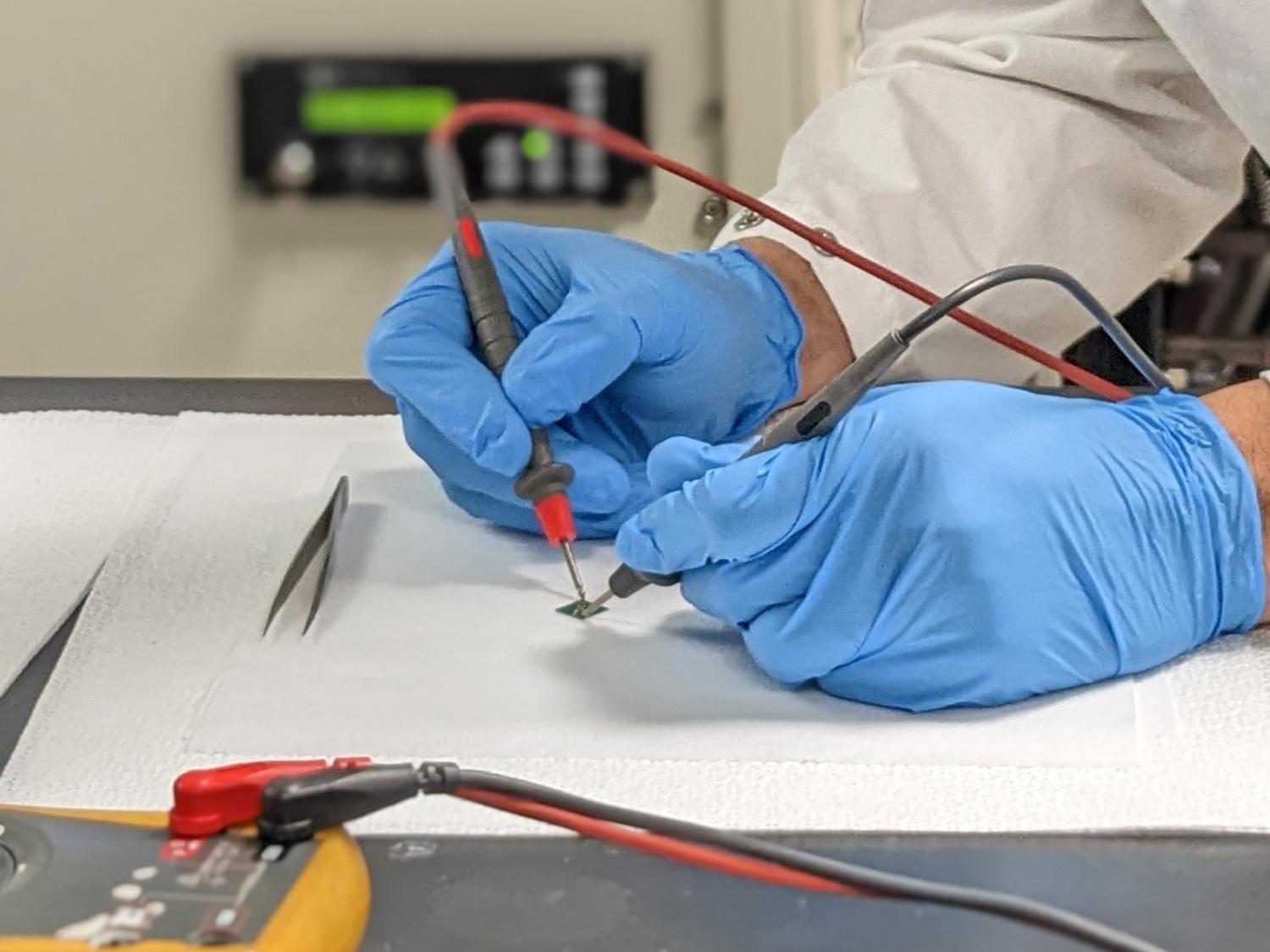UNSWシドニーの研究者が、水素燃料電池の画像を大幅に向上させるアルゴリズムを開発、医療用スキャンへの応用が期待される。 UNSW Sydney researchers develop algorithm to significantly enhance images of hydrogen fuel cells, with potential future application in medical scanning.
2023-02-15 ニューサウスウェールズ大学(UNSW)
◆Nature Communications』誌に掲載された論文で詳述されているこの新しいプロセスは、個々の水素燃料電池でテストされ、内部を正確に詳細にモデル化し、その効率を向上させる可能性があることが確認されています。
◆しかし、研究者らは、将来的には人間のX線写真にも応用でき、医療関係者が体内の微小な細胞構造をよりよく理解できるようになり、さまざまな病気の診断がより早く、よりよくできるようになるかもしれないとしている。
◆鉱物・エネルギー資源工学部のRyan Armstrong教授、Peyman Mostaghimi教授、Ying Da Wang博士、Kunning Tang博士、化学学部のChuan Zhao教授、Quentin Meyer博士からなるチームは、プロトン交換膜燃料電池(PEMFC)内で何が起こっているかの理解を深めるために、このアルゴリズムを開発しました。
◆PEMFCは、水素を燃料として発電し、家庭や自動車、産業界に電力を供給することができる静かでクリーンなエネルギー源です。この燃料電池は、電気化学的なプロセスによって水素を電気に変換し、反応の副産物として純粋な水だけが発生する。しかし、PEMFCは、水が適切に排出されないと効率が悪くなり、その結果、システムが「洪水」になることがある。これまで、燃料電池は非常に小さく、構造も複雑なため、水がどのように排出され、どのように溜まっていくかを正確に把握することは困難でした。
◆UNSWの研究者が開発したソリューションでは、ディープラーニングにより、セルの低解像度のX線画像を利用しながら、付随する高解像度スキャンからデータを推定し、セルの小さな断面の詳細な3Dモデルを作成することが可能です。
◆Wang博士は、発表された研究の中で、プロトン交換膜燃料電池(PEMFC)と呼ばれる彼らの超解像アルゴリズムは、高解像度画像と比較して、視野を約100倍改善することができると述べています。
<関連情報>
- https://newsroom.unsw.edu.au/news/science-tech/enhance-deep-learning-tool-boosts-x-ray-imaging-resolution-and-hydrogen-fuel-cell
- https://newsroom.unsw.edu.au/news/science-tech/new-method-designing-tiny-3d-materials-could-make-fuel-cells-more-efficient
- https://www.nature.com/articles/s41467-023-35973-8
- https://www.science.org/doi/full/10.1126/sciadv.adf6075
ディープラーニングを用いた実型プロトン交換膜燃料電池の大規模物理精度モデリング Large-scale physically accurate modelling of real proton exchange membrane fuel cell with deep learning
Ying Da Wang,Quentin Meyer,Kunning Tang,James E. McClure,Robin T. White,Stephen T. Kelly,Matthew M. Crawford,Francesco Iacoviello,Dan J. L. Brett,Paul R. Shearing,Peyman Mostaghimi,Chuan Zhao & Ryan T. Armstrong
Nature Communications Published:14 February 2023
DOI:https://doi.org/10.1038/s41467-023-35973-8

Abstract
Proton exchange membrane fuel cells, consuming hydrogen and oxygen to generate clean electricity and water, suffer acute liquid water challenges. Accurate liquid water modelling is inherently challenging due to the multi-phase, multi-component, reactive dynamics within multi-scale, multi-layered porous media. In addition, currently inadequate imaging and modelling capabilities are limiting simulations to small areas (<1 mm2) or simplified architectures. Herein, an advancement in water modelling is achieved using X-ray micro-computed tomography, deep learned super-resolution, multi-label segmentation, and direct multi-phase simulation. The resulting image is the most resolved domain (16 mm2 with 700 nm voxel resolution) and the largest direct multi-phase flow simulation of a fuel cell. This generalisable approach unveils multi-scale water clustering and transport mechanisms over large dry and flooded areas in the gas diffusion layer and flow fields, paving the way for next generation proton exchange membrane fuel cells with optimised structures and wettabilities.
高電極触媒表面積を有する階層型金属ナノ構造体の創製 Synthesis of hierarchical metal nanostructures with high electrocatalytic surface areas
Lucy Gloag ,Agus R. Poerwoprajitno ,Soshan Cheong,Zeno R. Ramadhan,Tadafumi Adschiri,J. Justin Gooding,Richard D. Tilley
Science Advances Published:11 Jan 2023
DOI:https://doi.org/10.1126/sciadv.adf6075

Abstract
3D interconnected structures can be made with molecular precision or with micrometer size. However, there is no strategy to synthesize 3D structures with dimensions on the scale of tens of nanometers, where many unique properties exist. Here, we bridge this gap by building up nanosized gold cores and nickel branches that are directly connected to create hierarchical nanostructures. The key to this approach is combining cubic crystal–structured cores with hexagonal crystal–structured branches in multiple steps. The dimensions and 3D morphology can be controlled by tuning at each synthetic step. These materials have high surface area, high conductivity, and surfaces that can be chemically modified, which are properties that make them ideal electrocatalyst supports. We illustrate the effectiveness of the 3D nanostructures as electrocatalyst supports by coating with nickel-iron oxyhydroxide to achieve high activity and stability for oxygen evolution reaction. This work introduces a synthetic concept to produce a new type of high-performing electrocatalyst support.



